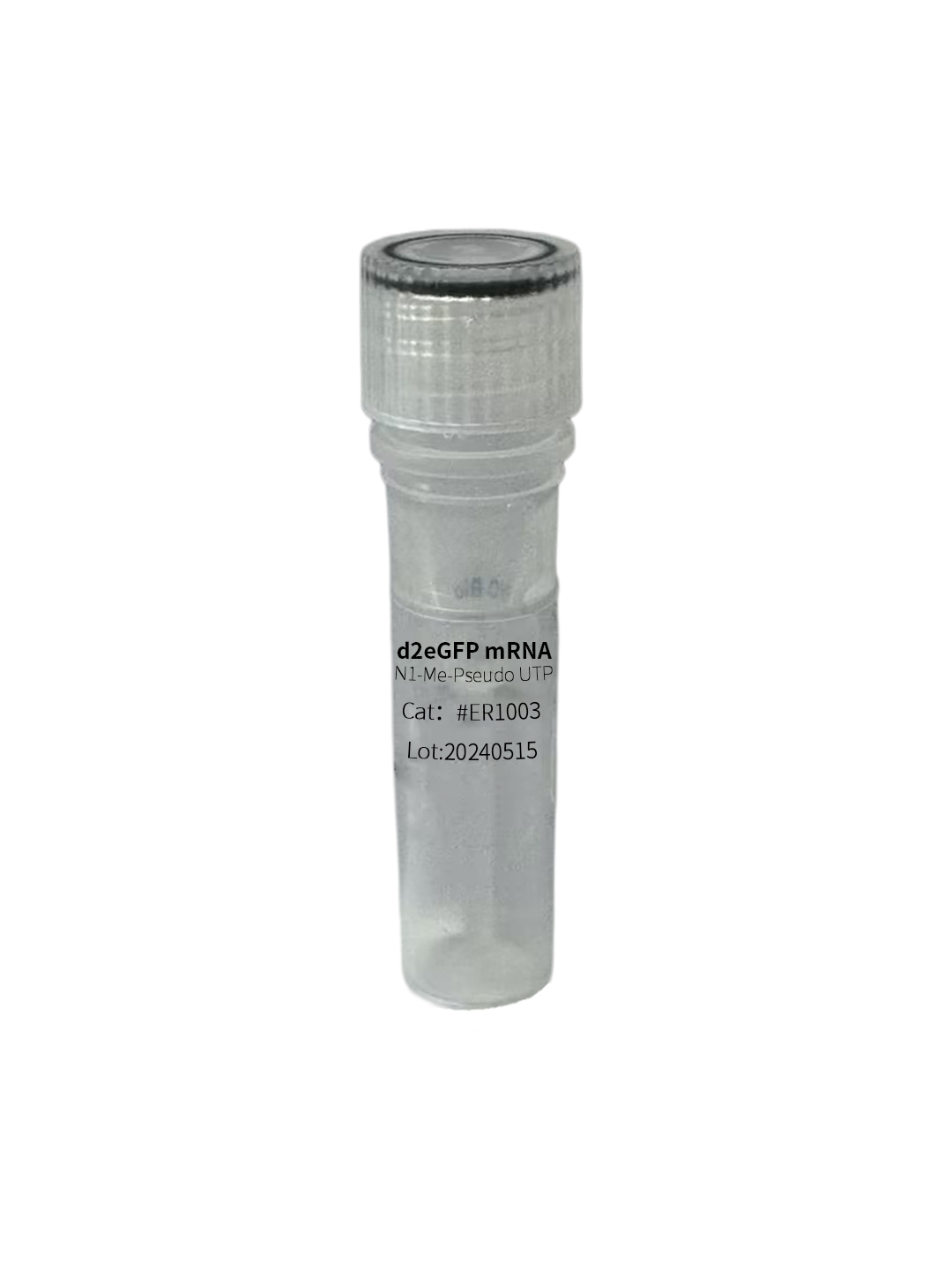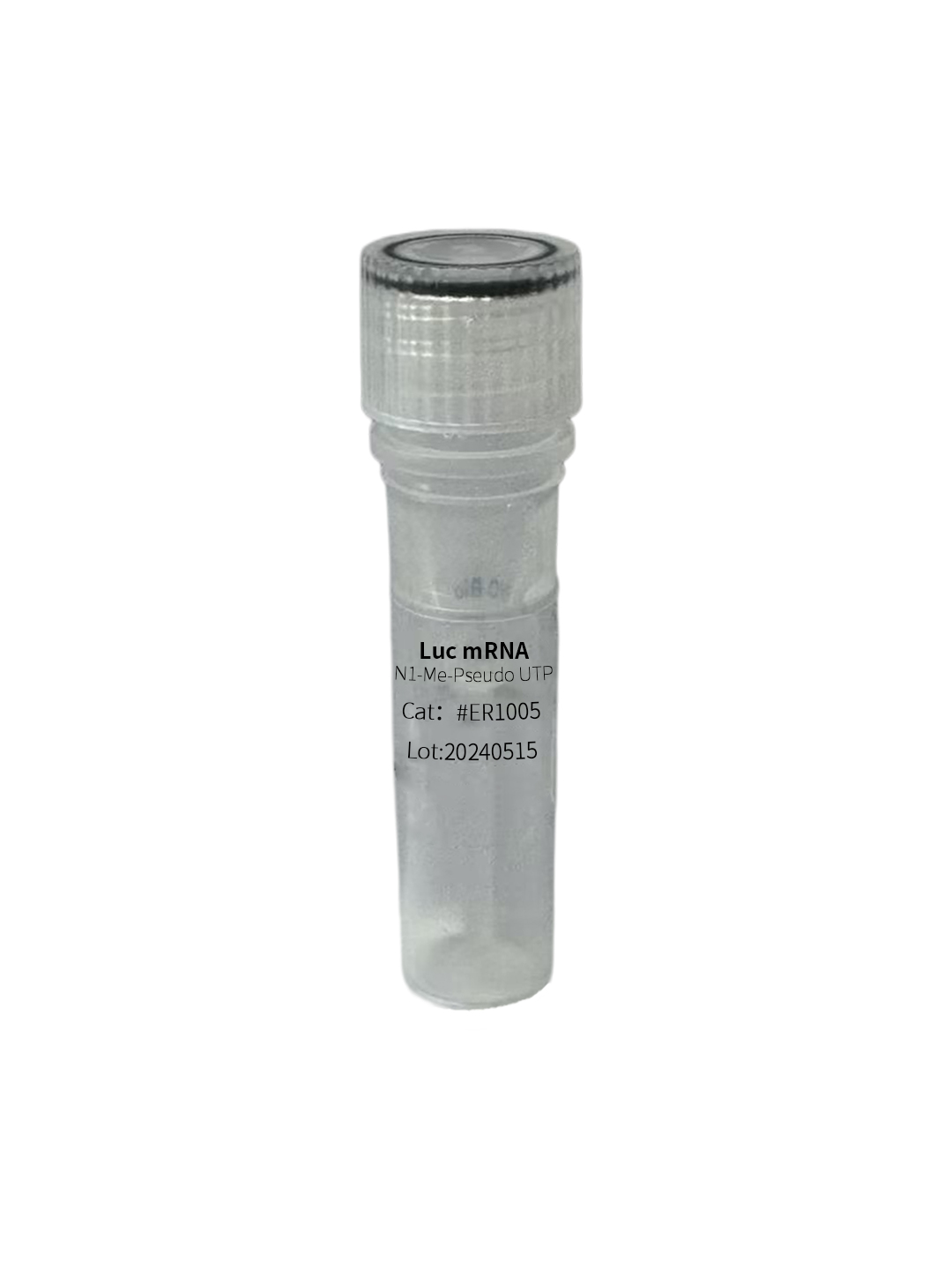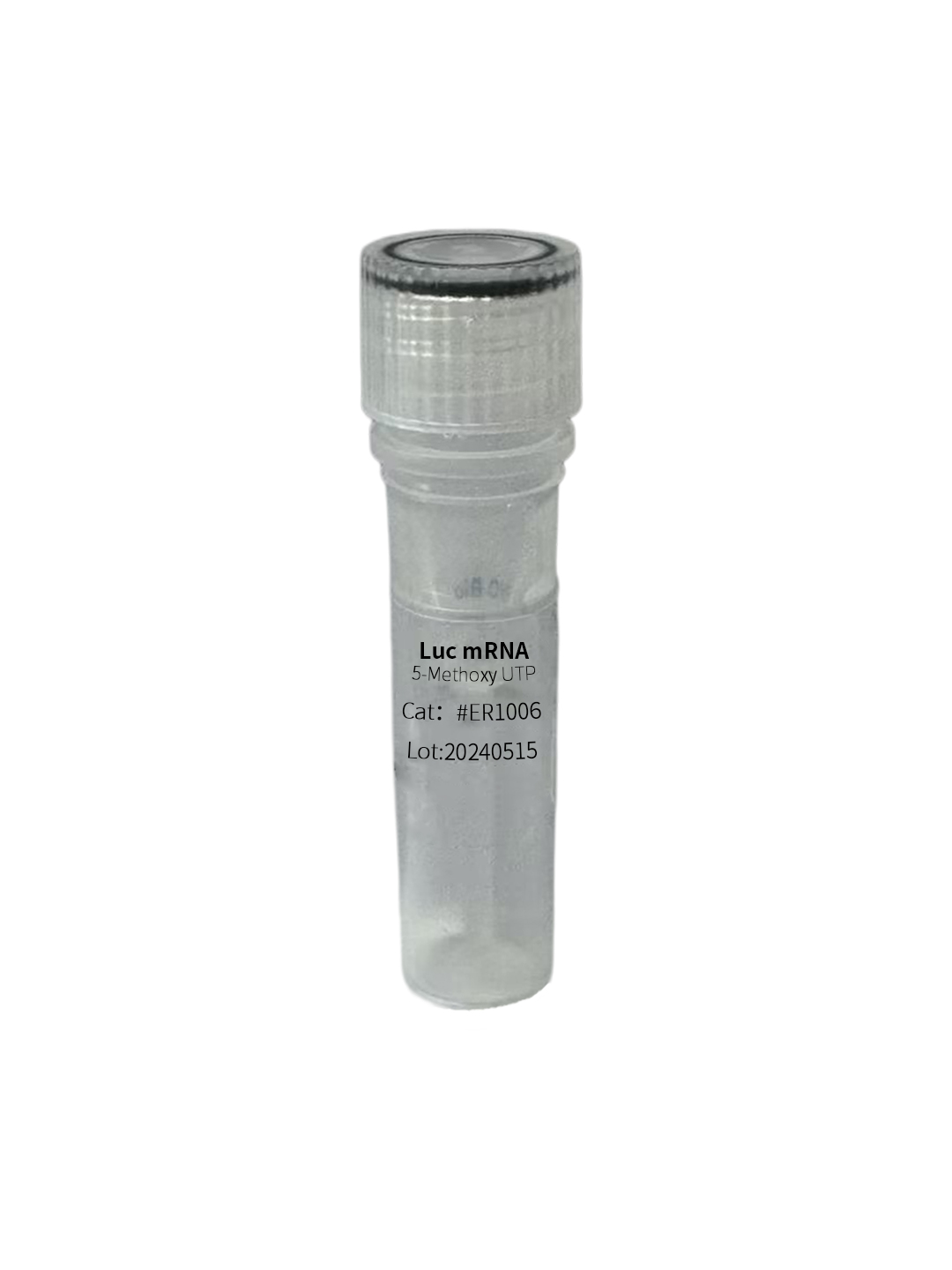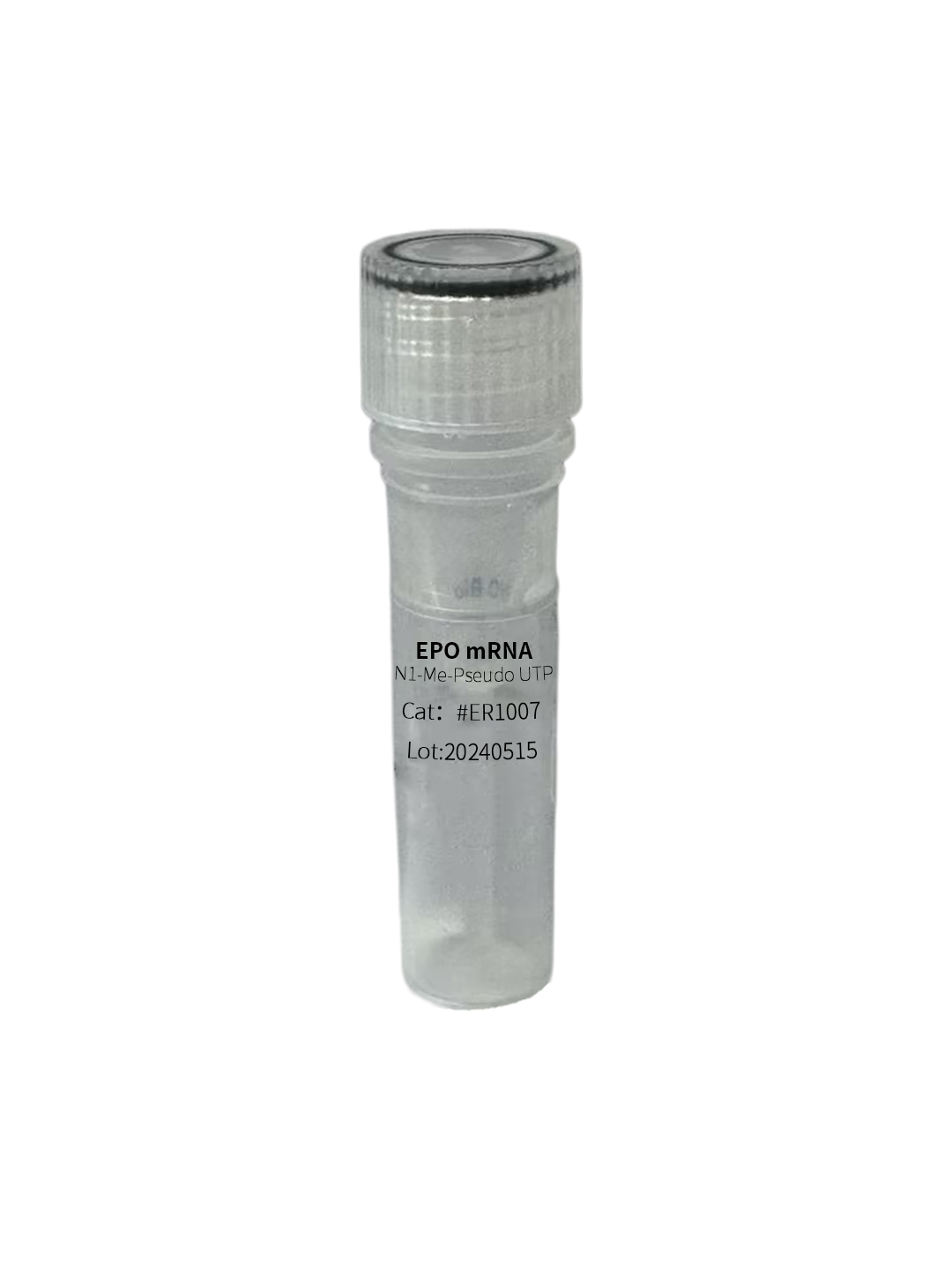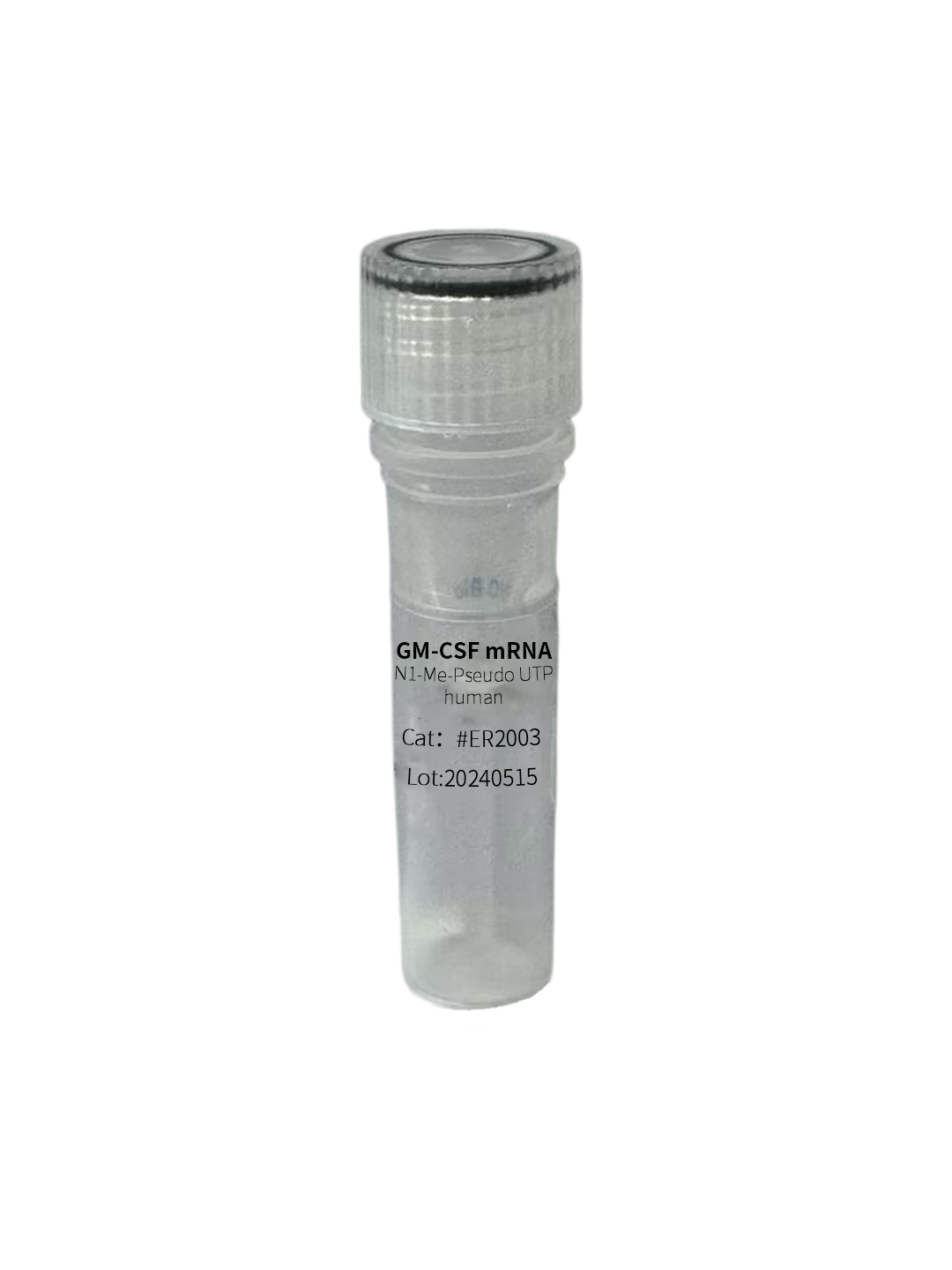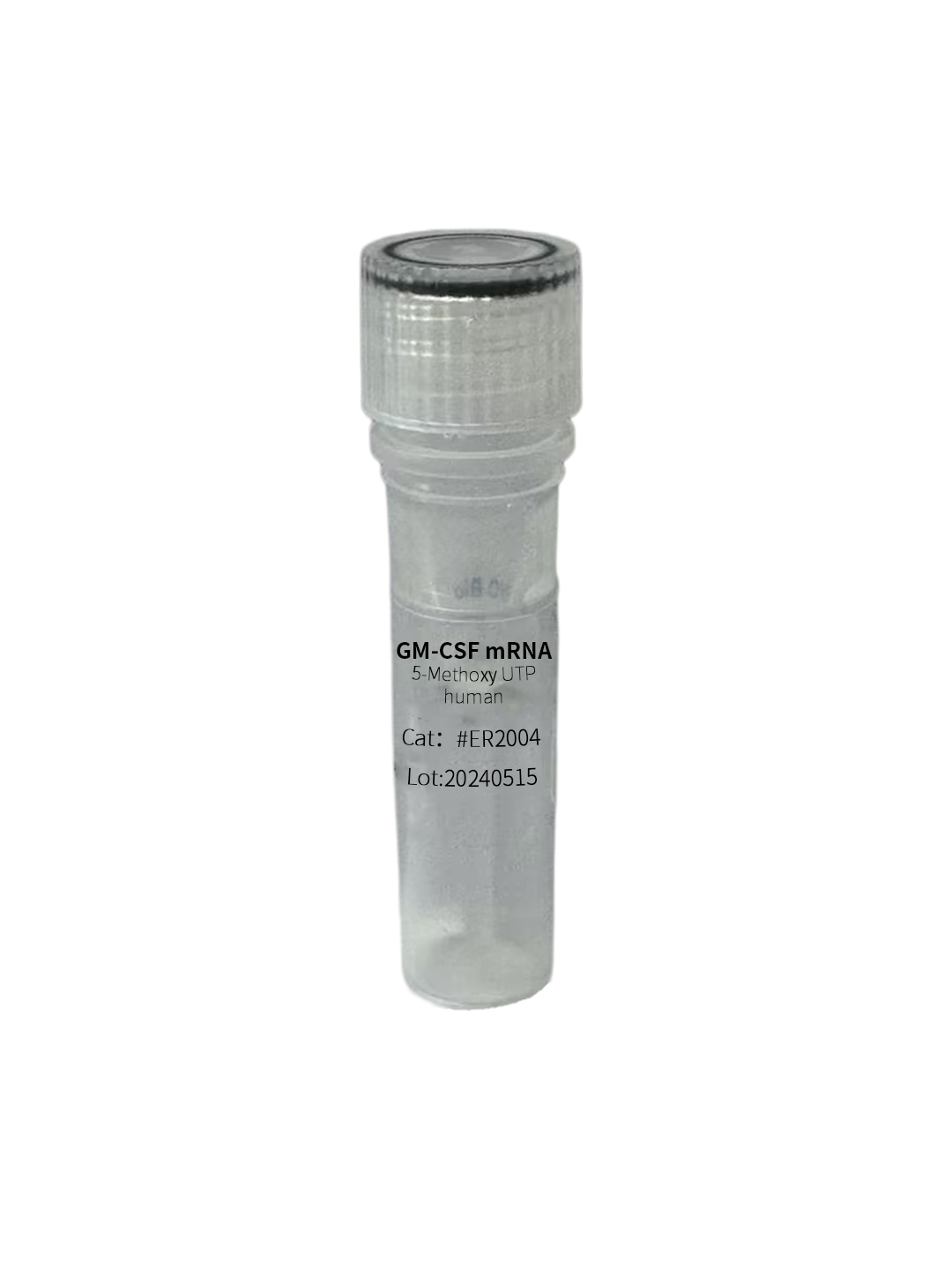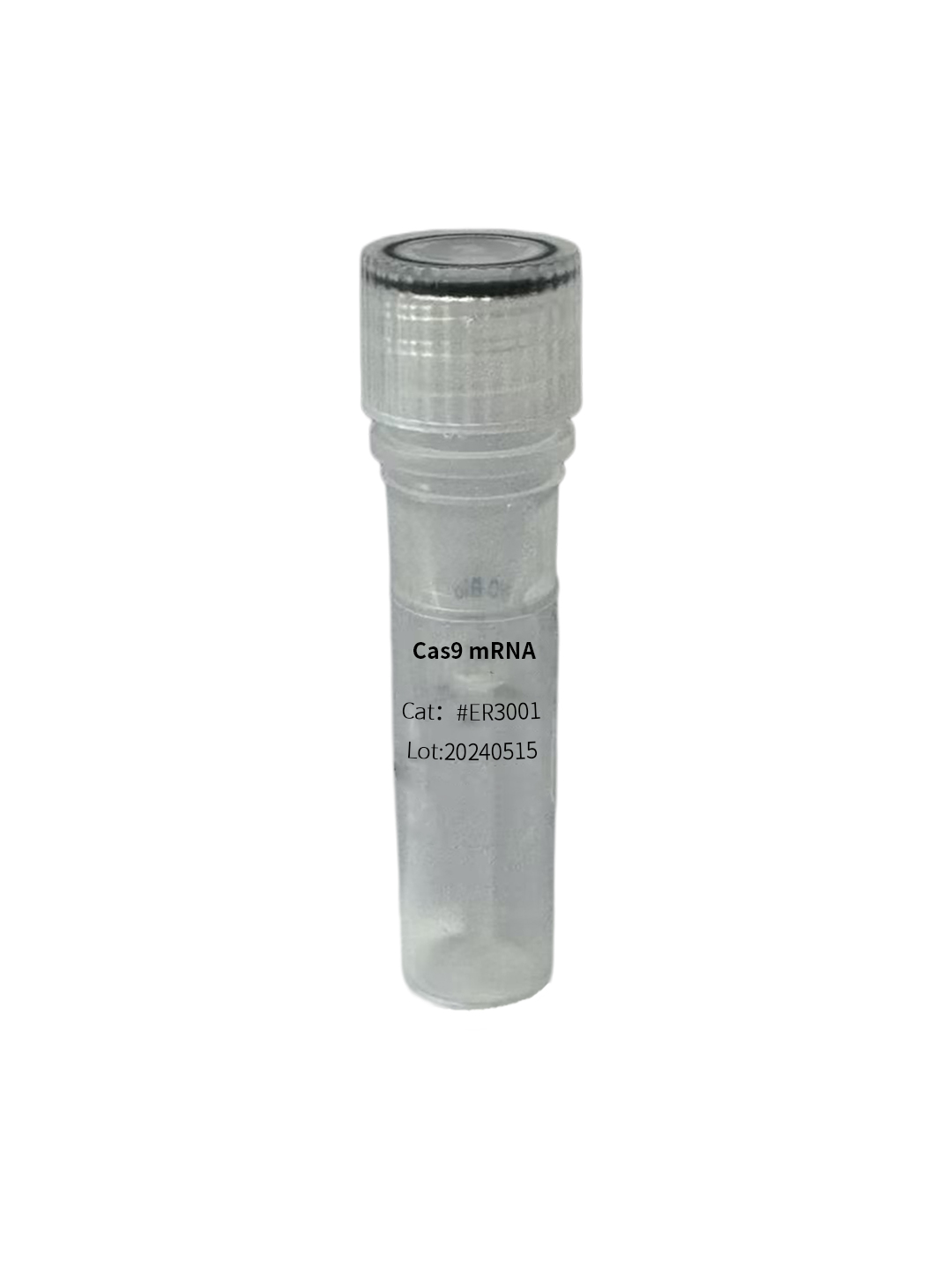mRNA Spot products
mRNA stock
mRNA Spot products
eGFP mRNA(5-Methoxy UTP)
The eGFP protein, short for enhanced green fluorescent protein, is a commonly used reporter molecule. When stimulated by light, it emits a strong and bright green fluorescence with maximum excitation/emission wavelengths of 488 nm/509 nm. By transfecting eGFP mRNA into cells, the cells can express the eGFP protein, allowing for the study of transfection and expression within the cells.
mRNA Spot products
d2eGFP mRNA(N1-Me-Pseudo UTP)
d2eGFP is a modified version of EGFP that enhances protein degradation and reduces half-life without reducing expression intensity. The d2eGFP protein can be used to precisely measure mRNA transcription and gene expression regulation. d2eGFP-mRNA has been generated through in vitro transcription and is already capped at the 5' end and poly A tailed at the 3' end.
mRNA Spot products
d2eGFP mRNA(5-Methoxy UTP)
d2eGFP is a modified version of EGFP that enhances protein degradation and reduces half-life without reducing expression intensity. The d2eGFP protein can be used to precisely measure mRNA transcription and gene expression regulation. d2eGFP-mRNA has been generated through in vitro transcription and is already capped at the 5' end and poly A tailed at the 3' end.
mRNA Spot products
Firefly Luciferase mRNA(N1-Me-Pseudo UTP)
Firefly Luciferase enzyme was initially isolated from the firefly Photinus pyralis and is a commonly used bioluminescent reporter molecule. It is frequently employed in research for gene regulation, cell viability assays, ATP level analysis, and in vivo imaging. After transfecting cells with Firefly Luciferase mRNA, the cells are able to express the Firefly Luciferase protein.
mRNA Spot products
Firefly Luciferase mRNA(5-Methoxy UTP)
Firefly Luciferase enzyme was initially isolated from the firefly Photinus pyralis and is a commonly used bioluminescent reporter molecule. It is frequently employed in research for gene regulation, cell viability assays, ATP level analysis, and in vivo imaging. After transfecting cells with Firefly Luciferase mRNA, the cells are able to express the Firefly Luciferase protein.
mRNA Spot products
EPO mRNA(N1-Me-Pseudo UTP)
The EPO mRNA codes for a hormone called erythropoietin, which controls red blood cell production in mammals. It is mainly produced in the kidneys, with a small amount produced in the liver. Erythropoietin also plays a role in healing brain injuries in wounds. Transfection of EPO mRNA in the body leads to a significant increase in reticulocyte count and hematocrit. This type of protein is also commonly used as an indicator protein to study the efficiency of cellular translation of engulfing proteins.
mRNA Spot products
EPO mRNA(5-Methoxy UTP)
The EPO mRNA codes for a hormone called erythropoietin, which controls red blood cell production in mammals. It is mainly produced in the kidneys, with a small amount produced in the liver. Erythropoietin also plays a role in healing brain injuries in wounds. Transfection of EPO mRNA in the body leads to a significant increase in reticulocyte count and hematocrit. This type of protein is also commonly used as an indicator protein to study the efficiency of cellular translation of engulfing proteins.
mRNA Spot products
GM-CSF mRNA(N1-Me-Pseudo UTP), Mouse
GM-CSF, also known as granulocyte-macrophage colony-stimulating factor, is a protein in mice that stimulates the formation of granulocytes and macrophages from bone marrow precursor cells. It has various physiological functions, primarily promoting the generation, differentiation, activation, and survival of these cells. Additionally, it plays a critical role as a homeostatic factor in the alveoli of the lungs, aiding in the development and long-term maintenance of alveolar macrophages. This mRNA is capped with Cap1 structure and N1-Me-Pseudo UTP modification. The UTR and poly A regions have been optimized with proprietary intellectual property rights to significantly enhance mRNA translation and expression for reduced immunogenicity and cellular toxicity.
mRNA Spot products
GM-CSF mRNA(5-Methoxy UTP), Mouse
GM-CSF, Mouse mRNA expresses GM-CSF protein in mice. GM-CSF is a hematopoietic growth factor that stimulates the formation of granulocytes and macrophages from bone marrow progenitor cells. It has a wide range of physiological functions, mainly promoting the generation, differentiation, activation, and survival of granulocytes and macrophages. It is also a key homeostatic factor in the alveoli of the lungs, involved in the development and long-term maintenance of alveolar macrophages. The Enno spot-type GM-CSF mRNA (5-Methoxy UTP), Mouse uses Cap1 structure and 5-Methoxy UTP modification. The UTR and poly A regions have been optimized with proprietary intellectual property rights to significantly enhance mRNA translation and expression for reduced immunogenicity and cellular toxicity.
mRNA Spot products
GM-CSF mRNA(N1-Me-Pseudo UTP), Human
GM-CSF, also known as granulocyte-macrophage colony-stimulating factor, is a protein in mice that stimulates the formation of granulocytes and macrophages from bone marrow precursor cells. It has various physiological functions, primarily promoting the generation, differentiation, activation, and survival of these cells. Additionally, it plays a critical role as a homeostatic factor in the alveoli of the lungs, aiding in the development and long-term maintenance of alveolar macrophages. This mRNA is capped with Cap1 structure and N1-Me-Pseudo UTP modification. The UTR and poly A regions have been optimized with proprietary intellectual property rights to significantly enhance mRNA translation and expression for reduced immunogenicity and cellular toxicity.
mRNA Spot products
GM-CSF mRNA(5-Methoxy UTP), Human
GM-CSF, or granulocyte-macrophage colony-stimulating factor, is a protein that stimulates the formation of granulocytes and macrophages from bone marrow progenitor cells. It has various physiological functions, primarily promoting the production, differentiation, activation, and survival of these cells. Additionally, it is a critical homeostatic factor in the lungs, where it is involved in the development and long-term maintenance of alveolar macrophages. The GM-CSF mRNA used in this study is a special type called 5-Methoxy UTP, which has been modified with Cap1 structure and 5-Methoxy UTP to optimize its UTR and poly A regions. This modification significantly improves mRNA translation efficiency and expression levels, while reducing its immunogenicity and cytotoxicity.
mRNA Spot products


